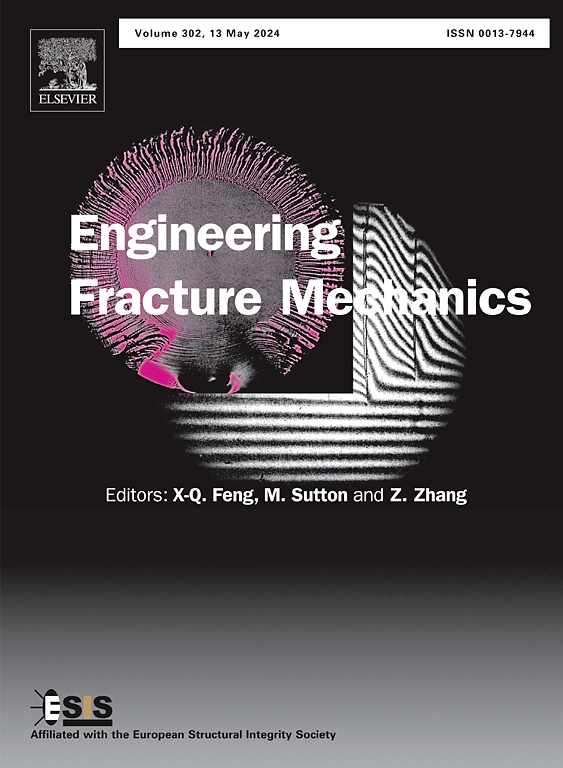Tensor-involved peridynamics: A unified framework for isotropic and anisotropic materials
IF 4.7
2区 工程技术
Q1 MECHANICS
引用次数: 0
Abstract
In this paper, we present a novel bond-based peridynamic model, termed Tensor-Involved Peridynamics (Ti-PD), which offers a unified framework for simulating both isotropic and anisotropic materials. This model enhances the conventional linear bond-based peridynamics by integrating a fourth-order tensor into the micromodulus function. The tensor components are calibrated to ensure the peridynamic equations converge to the classical continuum elasticity equations as the horizon parameter approaches zero. For isotropic materials with Poisson’s ratios of 1/4 in three dimensions and 1/3 in two dimensions with plane stress condition, the Ti-PD model aligns exactly with traditional bond-based peridynamics. To further expand its applicability, we introduce a damage model specifically designed for isotropic materials, incorporating a novel critical stretch criterion distinct from ordinary state-based peridynamics. The effectiveness of the Ti-PD model in simulating general anisotropic materials is demonstrated through numerical experiments. Additionally, the damage model is validated via simulations of crack propagation in a two-dimensional plate, showcasing superior agreement with experimental data compared to conventional ordinary state-based peridynamics.
张量参与的周动力学:各向同性和各向异性材料的统一框架
在本文中,我们提出了一种新的基于键的周动力学模型,称为张量参与周动力学(Ti-PD),它为模拟各向同性和各向异性材料提供了统一的框架。该模型通过将四阶张量积分到微模函数中,增强了传统的基于键的线性周动力学。对张量分量进行了标定,保证了当水平参数趋近于零时,周动力方程收敛于经典连续介质弹性方程。对于平面应力条件下三维泊松比为1/4、二维泊松比为1/3的各向同性材料,Ti-PD模型与传统的基于键的周动力学完全一致。为了进一步扩大其适用性,我们引入了一个专门为各向同性材料设计的损伤模型,其中包含一个不同于普通基于状态的周动力学的新的临界拉伸准则。通过数值实验验证了Ti-PD模型在模拟一般各向异性材料中的有效性。此外,通过二维板裂纹扩展模拟验证了该损伤模型,与常规的基于状态的周动力模型相比,该模型与实验数据具有更好的一致性。
本文章由计算机程序翻译,如有差异,请以英文原文为准。
求助全文
约1分钟内获得全文
求助全文
来源期刊
CiteScore
8.70
自引率
13.00%
发文量
606
审稿时长
74 days
期刊介绍:
EFM covers a broad range of topics in fracture mechanics to be of interest and use to both researchers and practitioners. Contributions are welcome which address the fracture behavior of conventional engineering material systems as well as newly emerging material systems. Contributions on developments in the areas of mechanics and materials science strongly related to fracture mechanics are also welcome. Papers on fatigue are welcome if they treat the fatigue process using the methods of fracture mechanics.

 求助内容:
求助内容: 应助结果提醒方式:
应助结果提醒方式:


